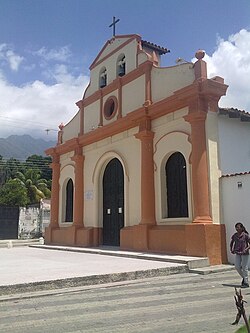This article needs additional citations for verification .(September 2014) |
Mariara | |
|---|---|
 | |
| Coordinates: 10°17′37″N67°42′40″W / 10.29361°N 67.71111°W | |
| Country | |
| State | Carabobo |
| Municipality | Diego Ibarra Municipality |
| Founded | 3 December 1781 |
| Elevation | 454 m (1,490 ft) |
| Population (2010) | |
• Total | 115,515 |
| • Demonym | Mariareño/a Mariarense |
| Time zone | UTC−4 (VET) |
| Postal code | 2017 |
| Area code | 0243 |
| Climate | Aw |
Mariara is a city in Carabobo State, Venezuela, the shire town of the Diego Ibarra Municipality. It was founded by bishop Mariano Marti on 3 December 1781.


